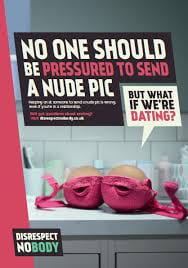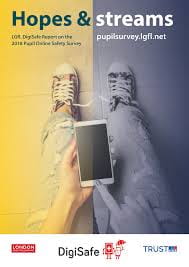Mar
2019
Quality assured resources for digital safeguarding
The London Grid for Learning is best known for providing broadband and services, such as email, to over 95% of the capital’s schools. It is less well known as a charity that provides good quality curriculum content to its subscribers, including many free resources for anyone who wants to use them. This is particularly true of its advice and materials for online safeguarding.
known for providing broadband and services, such as email, to over 95% of the capital’s schools. It is less well known as a charity that provides good quality curriculum content to its subscribers, including many free resources for anyone who wants to use them. This is particularly true of its advice and materials for online safeguarding.
At http://www.lgfl.net/online-safety you can find lots of free to download materials, including policies on acceptable use for staff, visitors, contractors and pupils (including symbolised ones for those with low literacy levels); advice to stakeholders such as governors on online safety; guidance on British values; a model e-security policy; and official documents such as the Ofsted Handbook, among many others.
You’ll also find blog posts at https://safeblog.lgfl.net/ such as a recent one, “Parents – scare or prepare?” about how to alert parents to online safety issues, and specifically the advice not to list specific apps and websites, because this can spread panic and see them looking out for named ones rather than having a general awareness, it is better to equip them with an understanding of the issues overall, so they can deal with any threats that come along. Whilst there are apps you might have real concerns about, such as Bodyeditor which allows an uploaded image to be altered – perhaps by an individual seeking the perfect figure, thereby reinforcing attitudes of dissatisfaction with their own appearance – in the long run these may be supplanted, or supplemented, by other ones.
There are also resources to address the very real problems associated with sexting. Very powerful testimony to the damage this can do was given by Megan Hinton when she spoke at the 2018 Digisafe Conference http://tinyurl.com/yy3cjlur . It is a thoug ht provoking talk that will make anyone consider carefully the potential consequences of sharing possibly compromising images. More resources can be found at http://www.sexting.lgfl.net , amongst them the UK Council for Child Internet Safety (UKCCIS) guidance for Designated Safeguarding Leads (DSL) on how to respond to incidences of it in school, and the College of Policing briefing note for Police Officers. Links off from the site include http://www.disrespectnobody.co.uk , which is aimed at young people and includes consideration of questions such as ‘What is consent?’
ht provoking talk that will make anyone consider carefully the potential consequences of sharing possibly compromising images. More resources can be found at http://www.sexting.lgfl.net , amongst them the UK Council for Child Internet Safety (UKCCIS) guidance for Designated Safeguarding Leads (DSL) on how to respond to incidences of it in school, and the College of Policing briefing note for Police Officers. Links off from the site include http://www.disrespectnobody.co.uk , which is aimed at young people and includes consideration of questions such as ‘What is consent?’
For many school staff it can feel as though issues that arise are isolated ones that others may not be experiencing, so for a broad overview of children and young peoples’ online lives the ‘Hopes and Streams’ report, https://www.lgfl.net/online-safety/hopesandstreams, based on the answers of nearly 40,000 school age respondents, helps provide some insights. It offers statistics and case studies analysed by factors such as age and gender and could provide a useful starting point for CPD sessions.
Alongside the materials for staff are links to resources, such as the BBC’s Ownit videos, https://www.bbc.com/ownit which pitches content at an age appropriate level using presenters from their own programmes, or well-know Youtubers, to address issues of life online. You might also want to look up the Calm Harm and Clear Fear apps for smartphones that give an immediate response should someone be considering self-harming, or be feeling overly-anxious.
of life online. You might also want to look up the Calm Harm and Clear Fear apps for smartphones that give an immediate response should someone be considering self-harming, or be feeling overly-anxious.
It can be difficult in school to find the time to source the materials and resources you need to teach, deliver training, or develop policy and strategic approaches to the whole area of digital safeguarding. The LGFL intend to help by providing this rich resource. A few minutes research here could save hours of scrabbling around with Google.